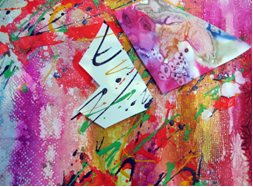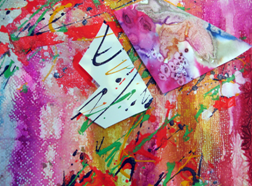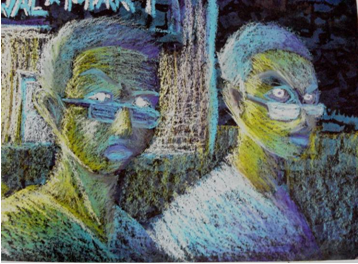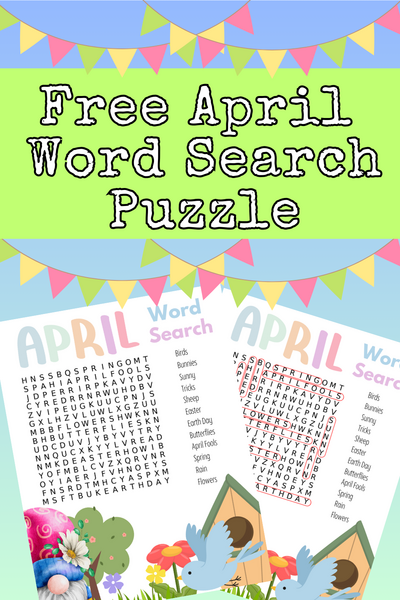Abstract Expressionism
Students will explore view two examples of Abstract Expressionism and the impact these two exemplars have had on American Art of the Twentieth Century with this lesson from Sargent Art.

Target Grade: 5
Goal (Terminal Objective): Students will define Abstract Expressionism as an art style. Students will recognize the impact of the work of Jackson Pollock and Frank Stella on the American art scene of the Twentieth Century.
Objective: Students will observe how texture and pattern emerge through repetition of line and shape. Students will demonstrate knowledge of repeat design.
Students will recognize formal elements in a work of art.
Students will explore the expressive capabilities of formal elements and a variety media.
Students will experiment with the intellectual and artistic process of creating abstract art.
National Standards:
Visual Arts Grades 5-8 Content Standard 1: Understanding and applying media, techniques, and processes
Visual Arts Grades 5-8 Content Standard 3: Choosing and evaluating a range of subject matter, symbols, and ideas
Visual Arts Grades 5-8 Content Standard 5: Reflecting upon and assessing the characteristics and merits of their work and the work of others. Social Studies Cross Curriculum Connection
Purpose: Students will become aware of variations of media, techniques, and processes used to investigate pattern and texture in an artwork. Students will become familiar with artists known for pattern in their artwork. Students will identify different styles and experiences of two American artists. Students will experience the Abstract Expressionist image making process and the rhythmic action utilized in creation. Students will become aware that the Abstract Expressionist artist wants the viewer to experience the formal elements and principles of composition along with their use in experience the emotional theme of the artwork.
The student will understand that Abstract Expressionism is a style of painting characterized by thick, freely brushed strokes, drips, or pourings, all used to express emotion.
New Vocabulary: actual texture, implied texture, pattern, repeat, elements of art, principles of art, emotional response, organic shapes, stylized, distortion, unity
Materials:
- Sargent Artist’s Oil Pastels
- Sargent White Glue
- Acrylic Fluorescent
- Acrylic Paint
- Matt board
- oak tag
- heavy white paper
- masking tape
- toothbrushes
- straws
- sticks
Time: This lesson may be modified from one to three hours, depending upon the size and complexity of expectations.
Introduction and Motivation (Set):
View the work of Frank Stella and Jackson Pollock. Discuss lines and shapes viewed in the exemplars. Identify positive space and negative space.
Discuss how Jackson Pollock and Frank Stella created their works of art. Jackson Pollock walked around his unstretched canvas which was placed on the floor, using sticks and miscellaneous materials to apply dripping paint mixed with sand, broken glass and other materials to create an exciting surface. Frank Stella elevated elements giving a relief aspect to his work.
Discuss feelings evoked in the paintings. Discuss rhythms felt when viewing the paintings. Discuss why the artists might have titled the works as they did.
Instruction:
Teacher demonstration of rendering shapes and textures in action painting describing elements that will unify the work of art.
Teacher will provide examples of overlapping as a technique to imply depth on a two-dimensional plane. Introduce example -- ask students to discuss how the paint was applied. Teacher will demonstrate color selection and application and techniques for placing some elements in relief. Teacher will provide examples of unity in artwork describing how the Abstract Expressionistic artist gave unity to their work.
Activities:
(1) Guided Practice:
1. Students select size and shape of background paper. Students also select a few smaller pieces of paper and apply the same process listed in steps 2 thru 4.
2. Students will select brush sized to apply paint to the background.
Various colors are used -- some hard-edge applied others blended.
.
3. After the first layer of paint is dry, students mask over areas covering them with paper and masking tape or painter’s tape.
4. Students apply a second layer of paint, utilized a variety of tools such as brayers, sponges, toothbrush spackling, dripping from sticks, etc.
5. After second layer is dry, step 4 is repeated, leaving masked areas covered, and adding additional masked areas with tape and paper shapes. Further steps may be added if time permits.
6. Students use splatter painting to embellish certain areas.
7. Students cut out areas of the smaller piece of paper and glue to small pieces of Styrofoam, then glue to background painting. Students may use oil pastels to embellish their artwork.
8. Students will compose a writing component describing, in depth, the emotion portrayed and the innovations they provided to their piece.
(2) Independent Practice and Check for Understanding: Teacher circulates among working students visually recording students demonstrating understanding of objectives and provides reinforcement.
(3) Closure: Students record the emotion conveyed and the elements used to convey those feelings similar to the exemplar. They will include innovations they provided to the piece.
Evaluation:
Level One -- The finished Abstract Expressionistic painting very successfully demonstrates the student’s understanding of unity. Depth is successfully implied in the design by the use of the student’s understanding of overlapping. The viewer’s eye moves easily around the composition. The student has shown a high level of craftsmanship and technical skill. The student successfully completed the writing component describing, in depth, the emotion portrayed and the innovations they provided to their piece.
Level Two -- The finished Abstract Expressionistic painting shows good understanding of design concepts as well as the use of overlapping to imply depth. The painting is creative and craftsmanship is good. The student has composed a good writing component describing the emotion portrayed and the innovations provided to their piece.
Level Three --The finished Abstract Expressionistic painting shows limited understanding of design concepts and the concepts of unity and overlapping. Creativity and craftsmanship are minimal. The student has provided a writing component with limited description of the emotion portrayed and the innovations provided to the piece.
Level Four -- The finished Abstract Expressionistic painting shows a lack of understanding of the focused elements of design as well as little understanding of the concept of unity. Technical skill and craftsmanship is poor. The student has provided some evidence of a writing component describing the emotion portrayed and the innovations provided to their piece.
Extension: Surface may have three-dimensional objects glued onto it as a relief design.
Read NextExpressive Oil Pastel Portraits









